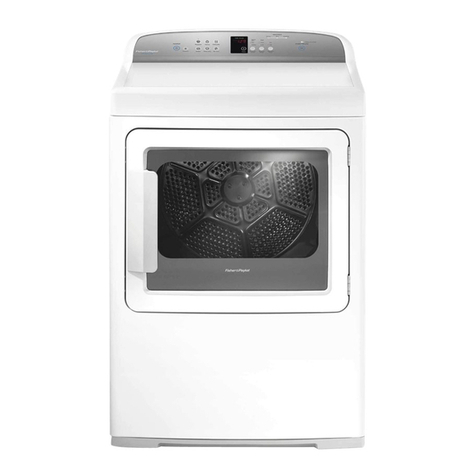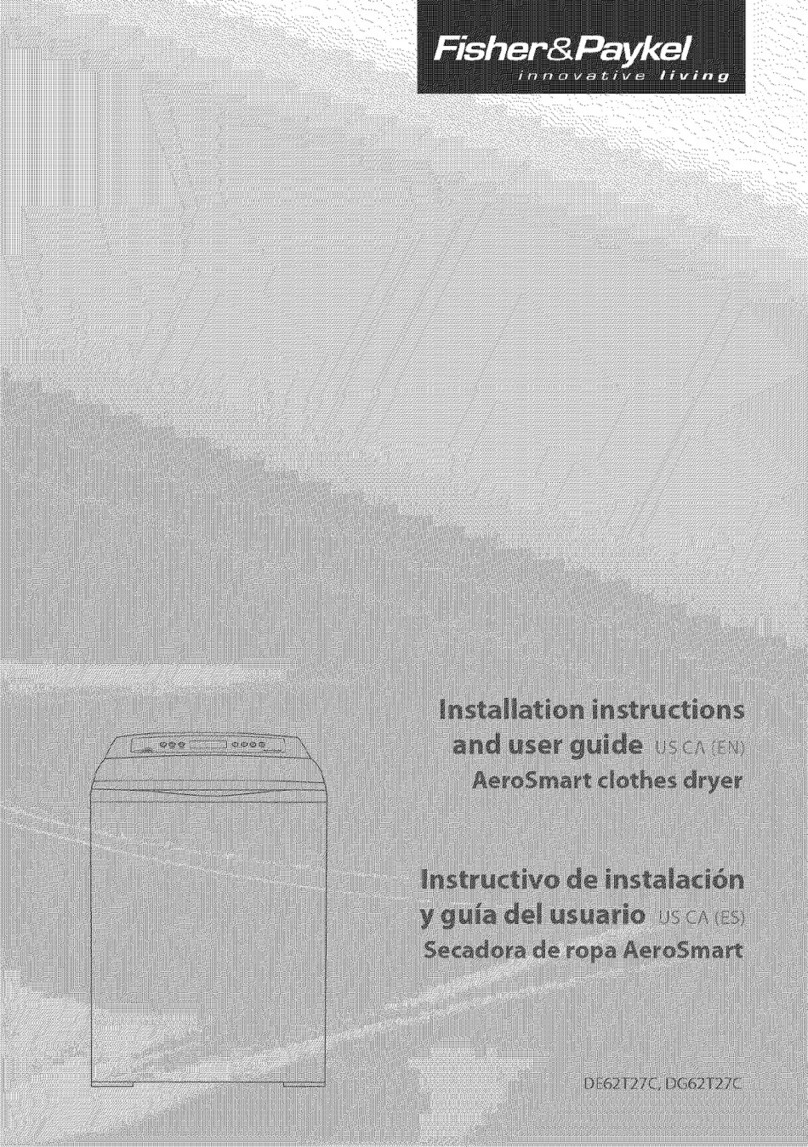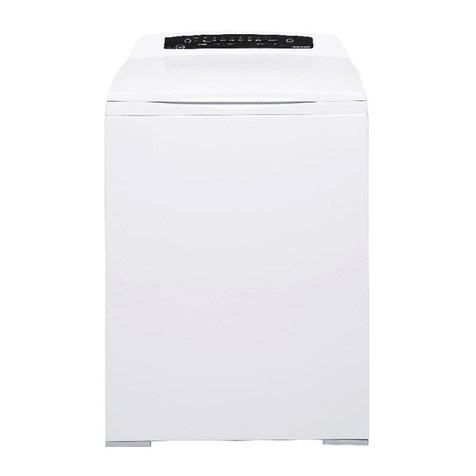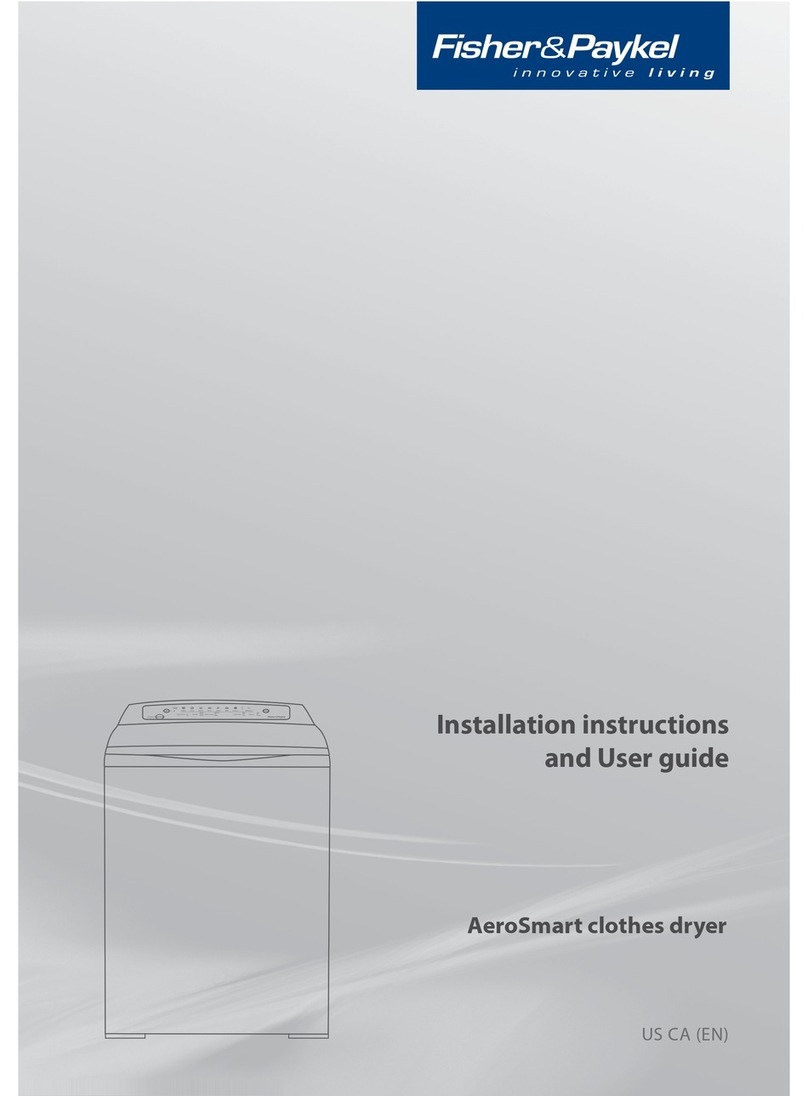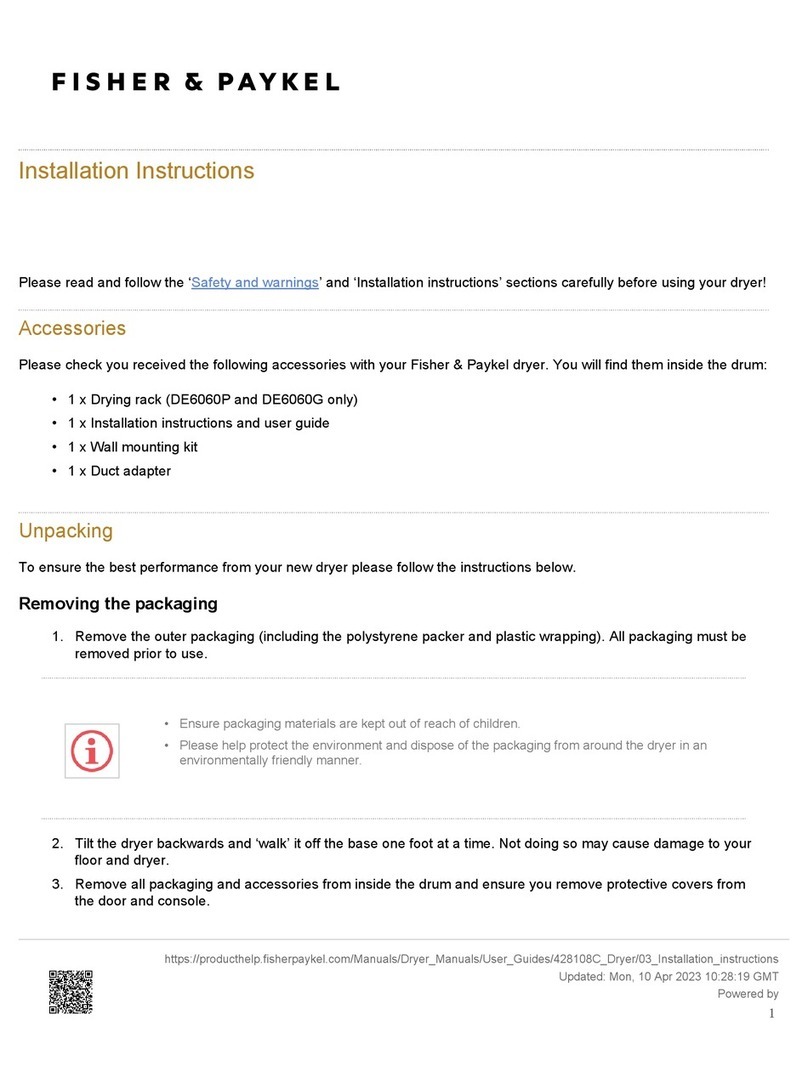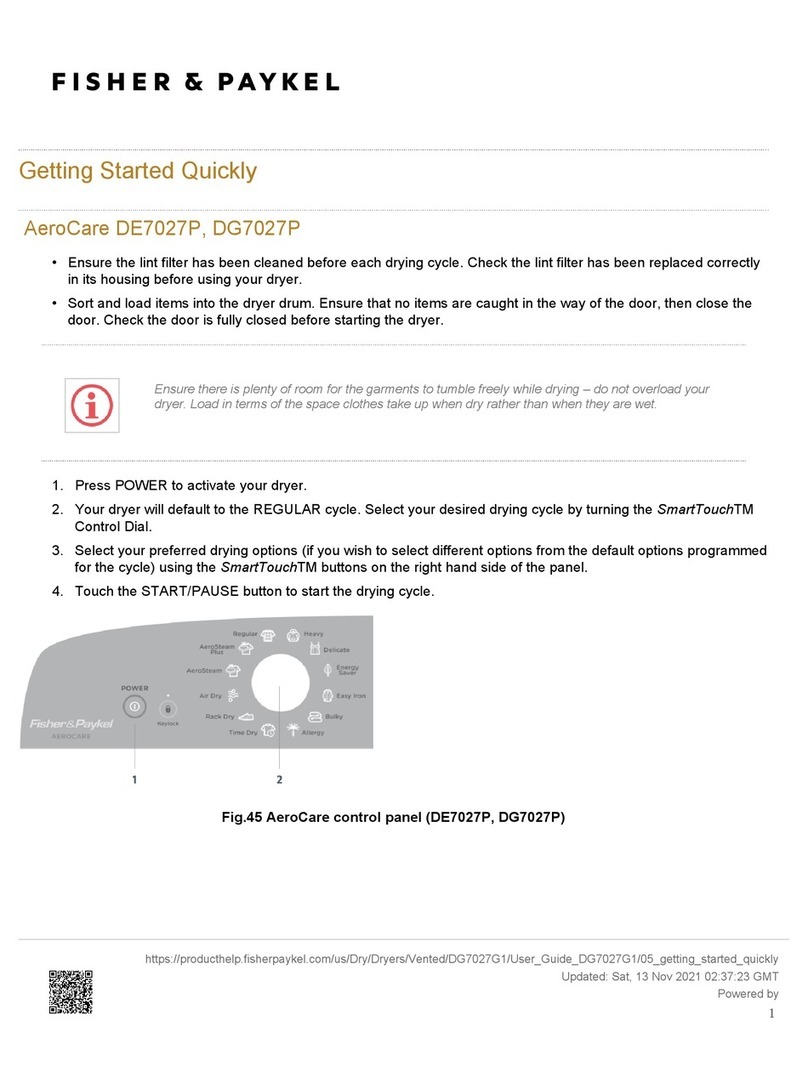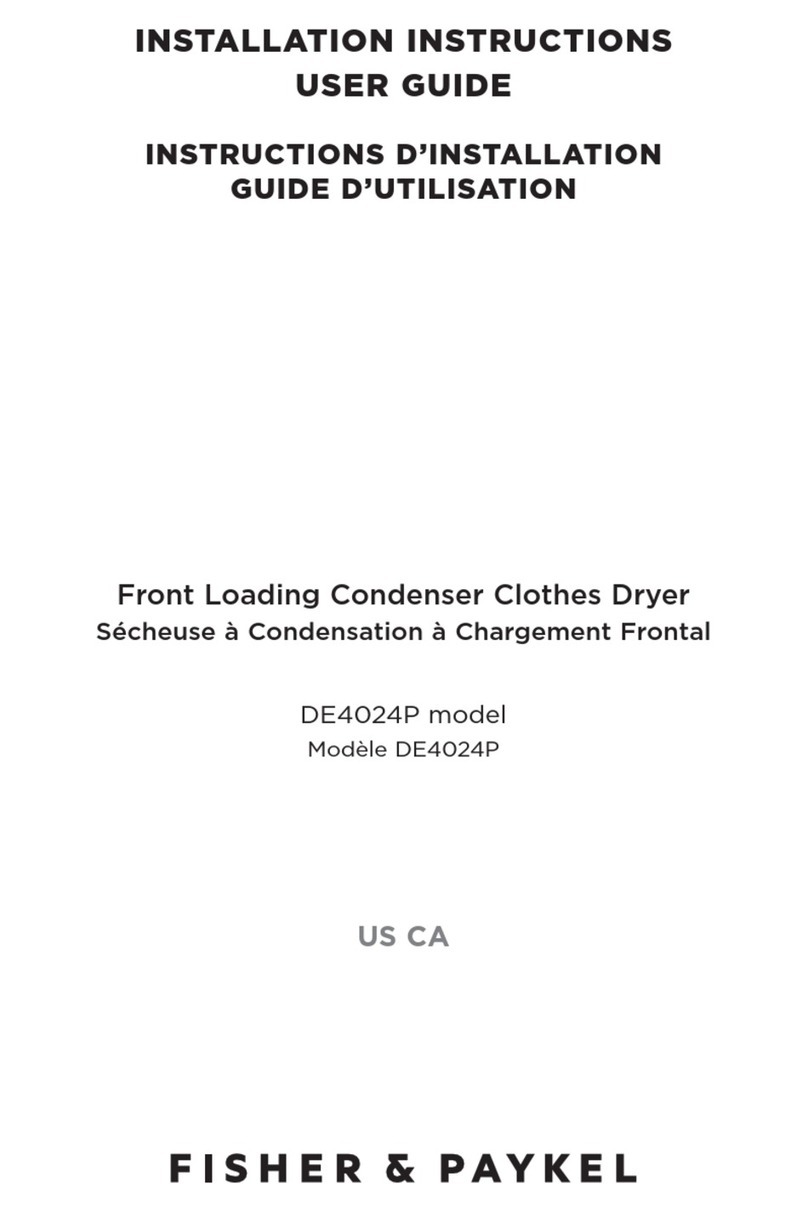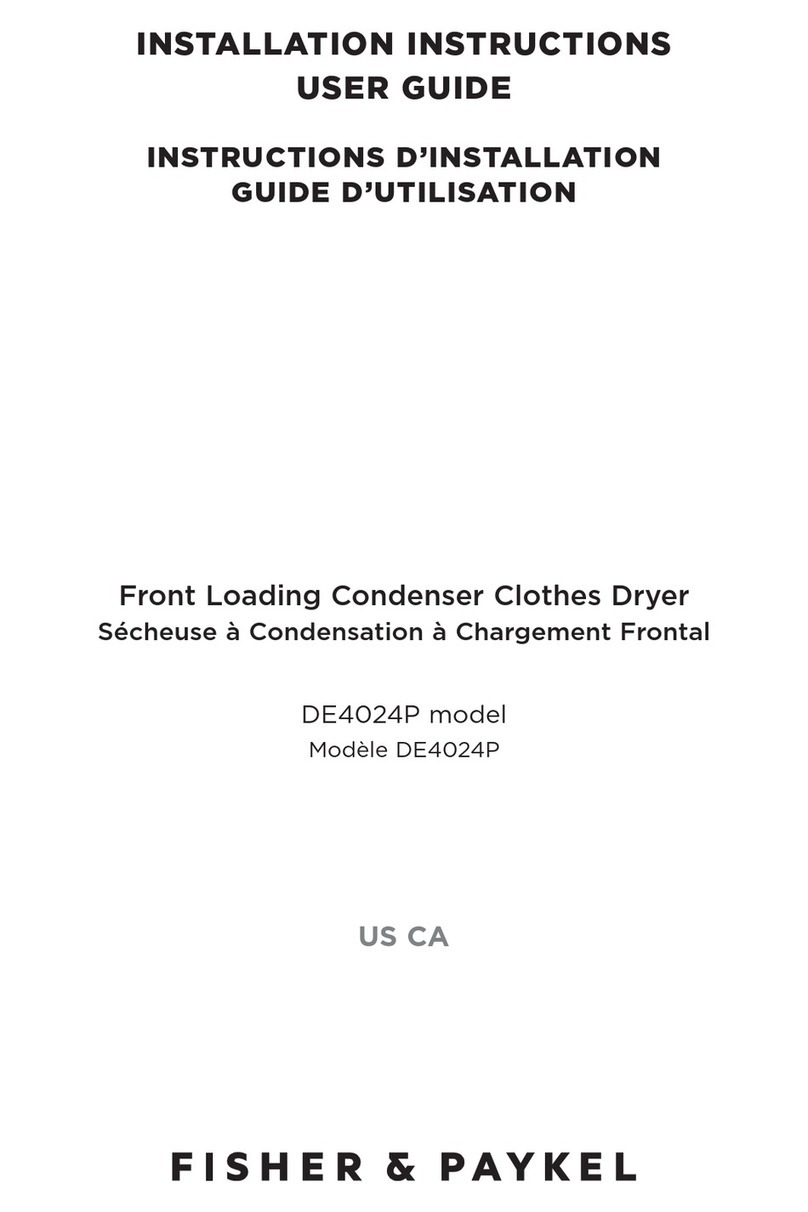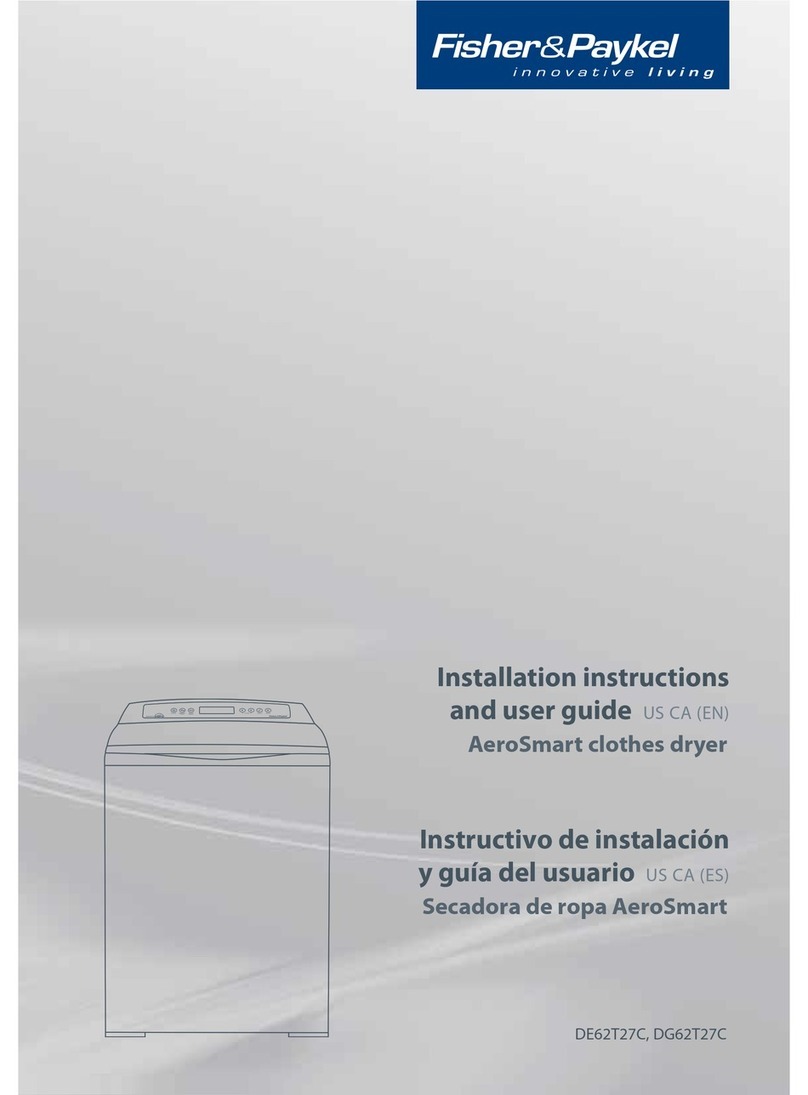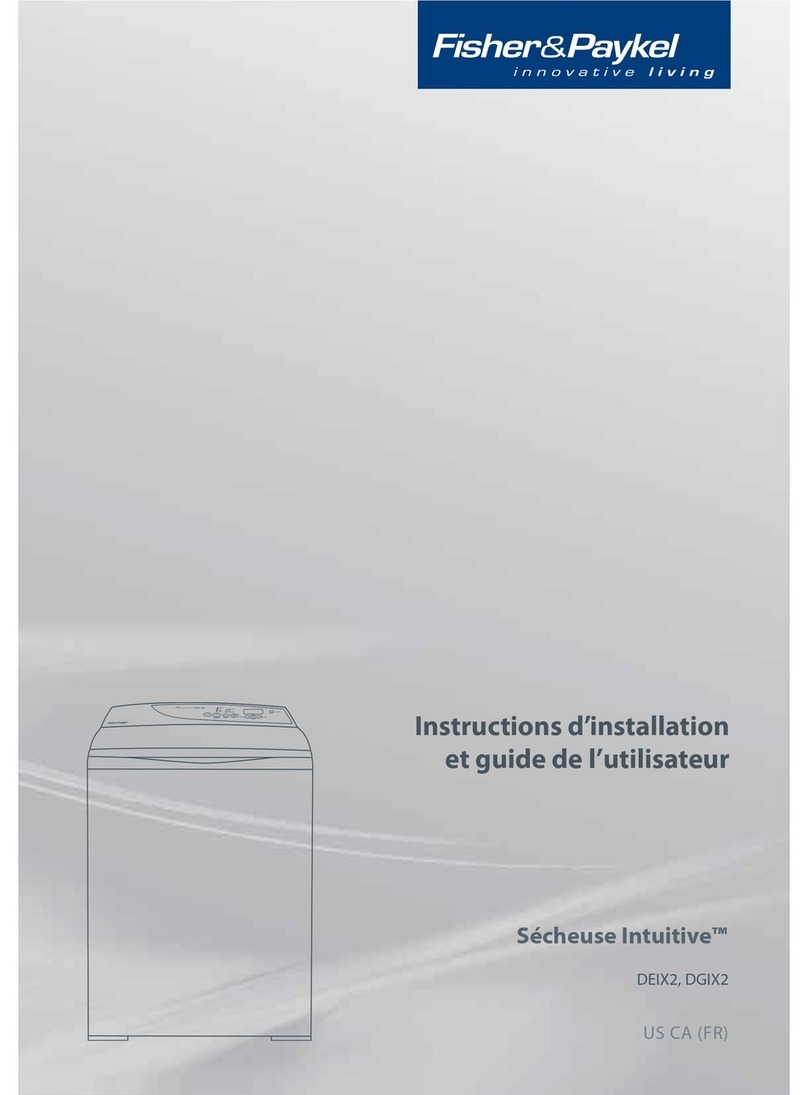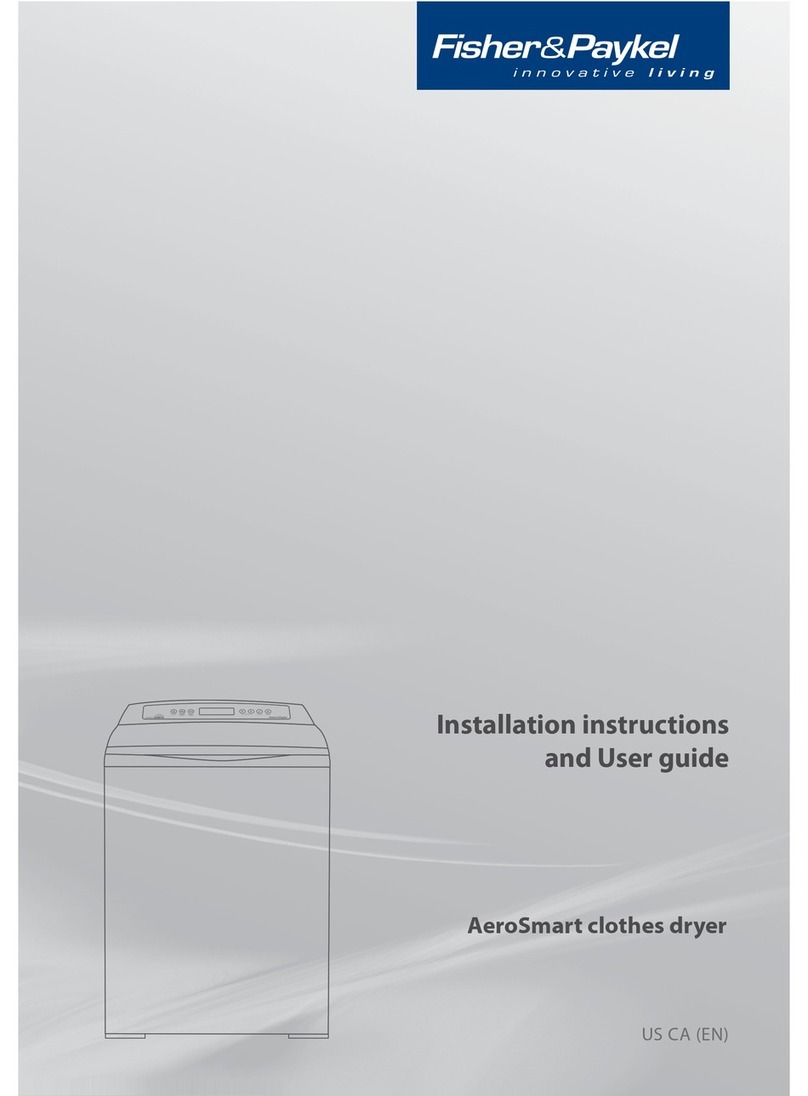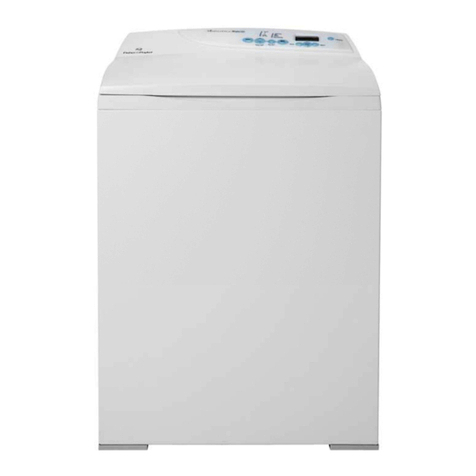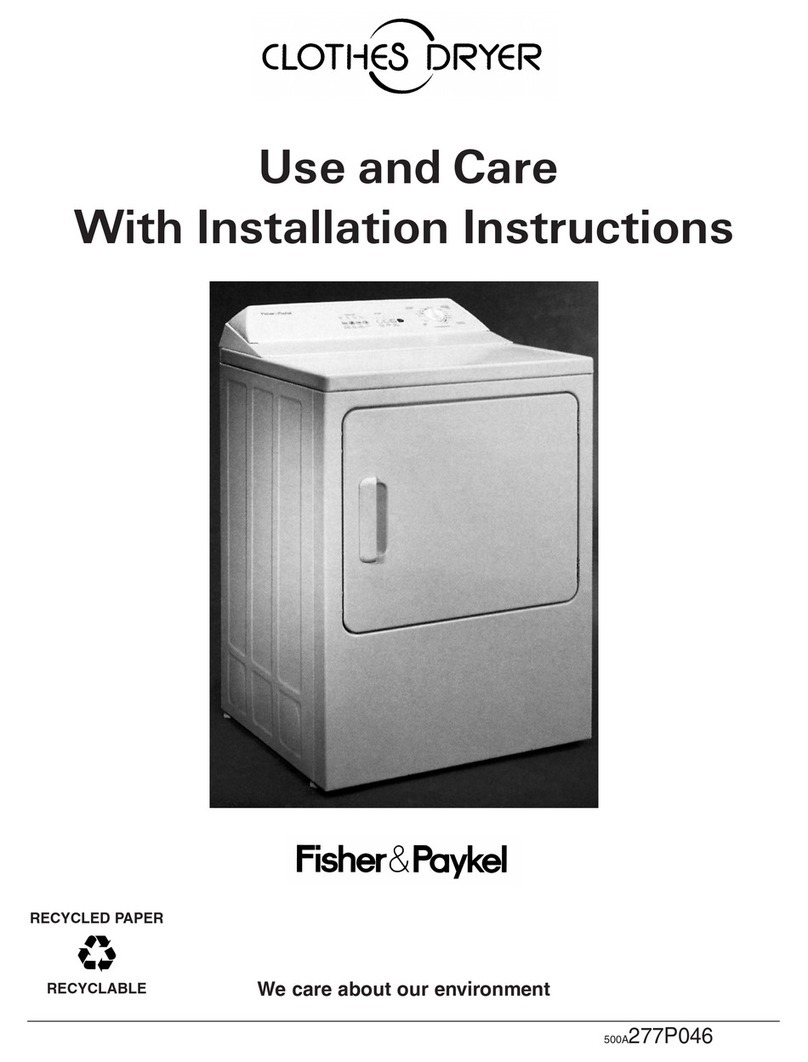Exhaust information
_WARNING: TO REDUCE THE RISK
OF FIRE AND PERSONAL INJURY:
•Use only metal duct for exhausting dryer to
outdoor.
•Do not terminate exhaust in a chimney, any gas
vent, under an enclosed floor (crawi space), or into
an attic. The accumulated lint could create a fire
hazard.
•Provide an access for inspection and cleaning of
the exhaust system, especially at turns. Inspect and
clean at least once per year.
•Never terminate the exhaust into a common duct
with a kitchen exhaust. A combination of lint and
grease could create a fire hazard.
•Do not obstruct incoming or exhausted air.
Rear Exhaust Location
This dryer comes ready for rear exhausting.
U JJ 31/2
i "
nnl....... .OTE:A ,ever.ca, ,n,ens,on
L___ _.J_ J_ theOistancebetweencaOJne,
i;_ [--- - I _ bottom to floor surface.
11 3/4"
Steps to change Dryer to Side or Bottom
Exhaust
1. Remove Access Panel. -- _
2. Straighten up the tab inside the exhaust duct at
the back of the appliance, then remove the internal
duct connected to
the blower housing.
3. Cut the duct as shown, iiiiii_----_ '_
TAB OPENING /F8 5/8" _'l
4. Reconnect and secure the cut portion of the duct
to the blower housing. Make sure that the tab portion
is at the bottom of the duct.
r"
BLOWER / r t
HOUSING ---_ L_
8 5/8" CUT l "I
PORTION ---_1 I
TAB
OPENING l_j
'
4 3/4"
I
Il'Only metal duct
may be used
inside the dryer
cabinet
i _°_a
=-t 4 3/4"
NOTE: To secure the duct, insert the tab (located on
the appliance base) in the opening and bend it.
5. Detach and remove the desired knockout.
6. Use standard metal elbow and duct to exhaust.
7. Cover the opening at the back with the plate pro-
vided on the back of the appliance.
ExhaustLength
The MAXIMUM ALLOWABLE length of the exhaust
system depends upon the type of duct, number of turns,
the type of exhaust hood (wall cap), and all conditions
noted below. The maximum allowable length for both
rigid and flexible metal duct is shown in the table below.
More than two 90 °turns are not recommended.
FOR RECOMMENDED MAXIMUM LENGTH
ELECTRIC
DRYER Weather Hood Type
ONLY Recommended Use only for short
run installations
4"
Rigid Rigid
No. of 90°
elbows
0
1
2
3
4
90 Feet
60 Feet
45 Feet
35 Feet
25 Feet
Flexible
Metal
55 Feet
40 Feet
30 Feet
20 Feet
15 Feet
60 Feet
45 Feet
35 Feet
25 Feet
15 Feet
2 112"
Flexible
Metal
45 Feet
30 Feet
20 Feet
15 Feet
10 Feet
Do not use non metallic flexible duct.
Hood or Wall Cap
• Terminate in a manner to prevent back drafts or
entry of birds or other wildlife.
• Termination should present minimal resistance
to the exhaust airflow and should require little or
no maintenance to prevent clogging.
• Never install screen over exhaust duct.
• Wall caps must be installed at least 12" above
ground level or any other obstruction with the
opening pointed down.
• If roof vents or louvered plenums are used, they
must be equivalent to a 4" dampered wall cap in
regard to resistance to airflow, prevention of back
drafts and maintenance required to prevent clogging.
Separation of Turns
For best performance, separate all turns by at least 4 ft.
of straight duct, including distance between last turn
and dampered wall cap.
Turns Other Than 90*
• One turn of 45° or less may be ignored.
• Two 45 ° turns should be treated as one 90 °.
• Each turn over 45 ° should be treated as one 90 °.
Sealing of Joints
• All joints should be tight to avoid leaks. The male
end of each section of duct must point away from
the dryer.
• Do not assemble the duct work with fasteners that
extend into the duct. They will serve as a collection
point for lint.
• Duct joints can be made air and moisture-tight
by wrapping the overlapped joints with duct tape.
